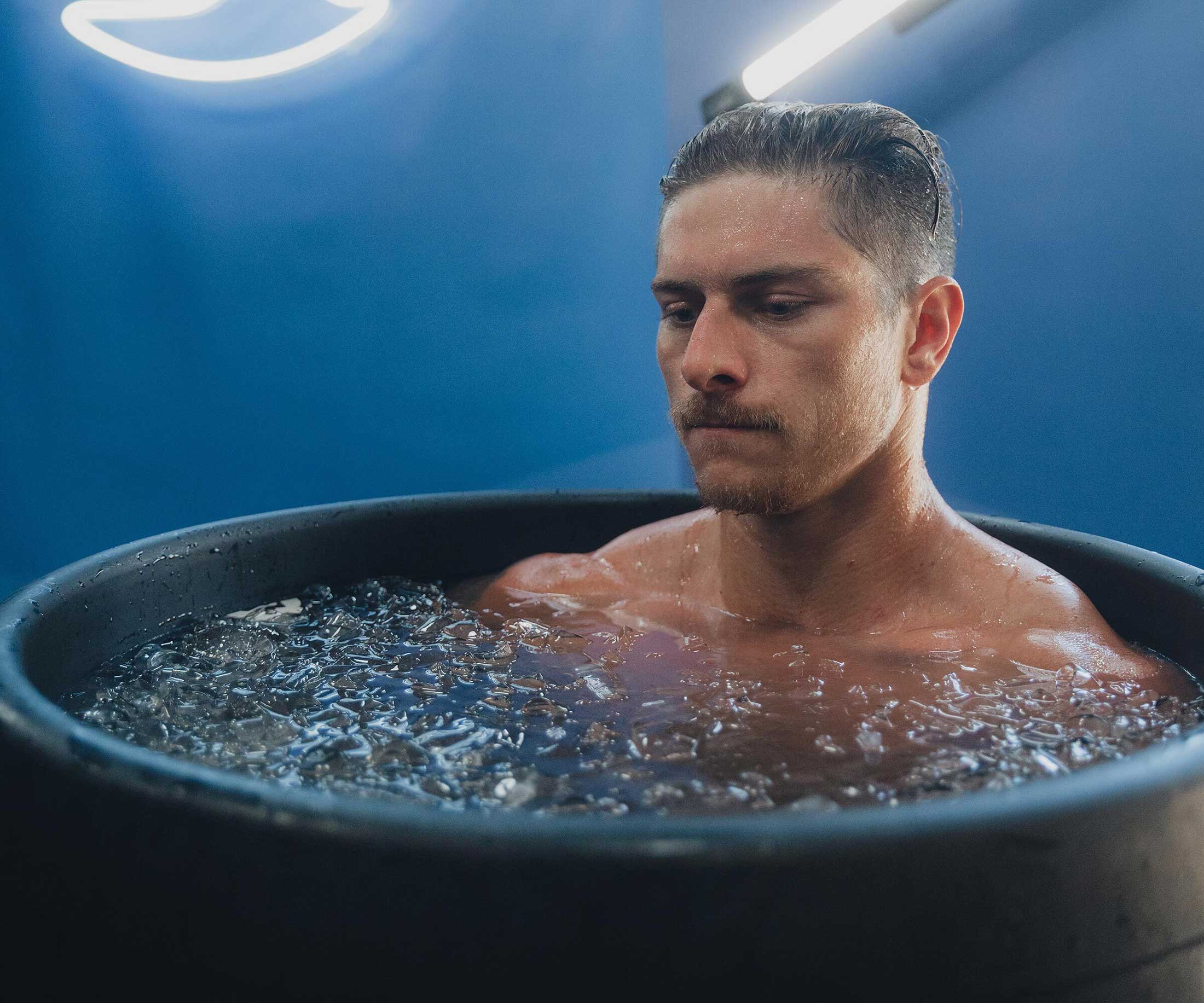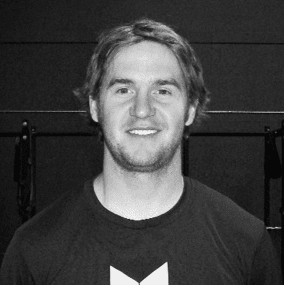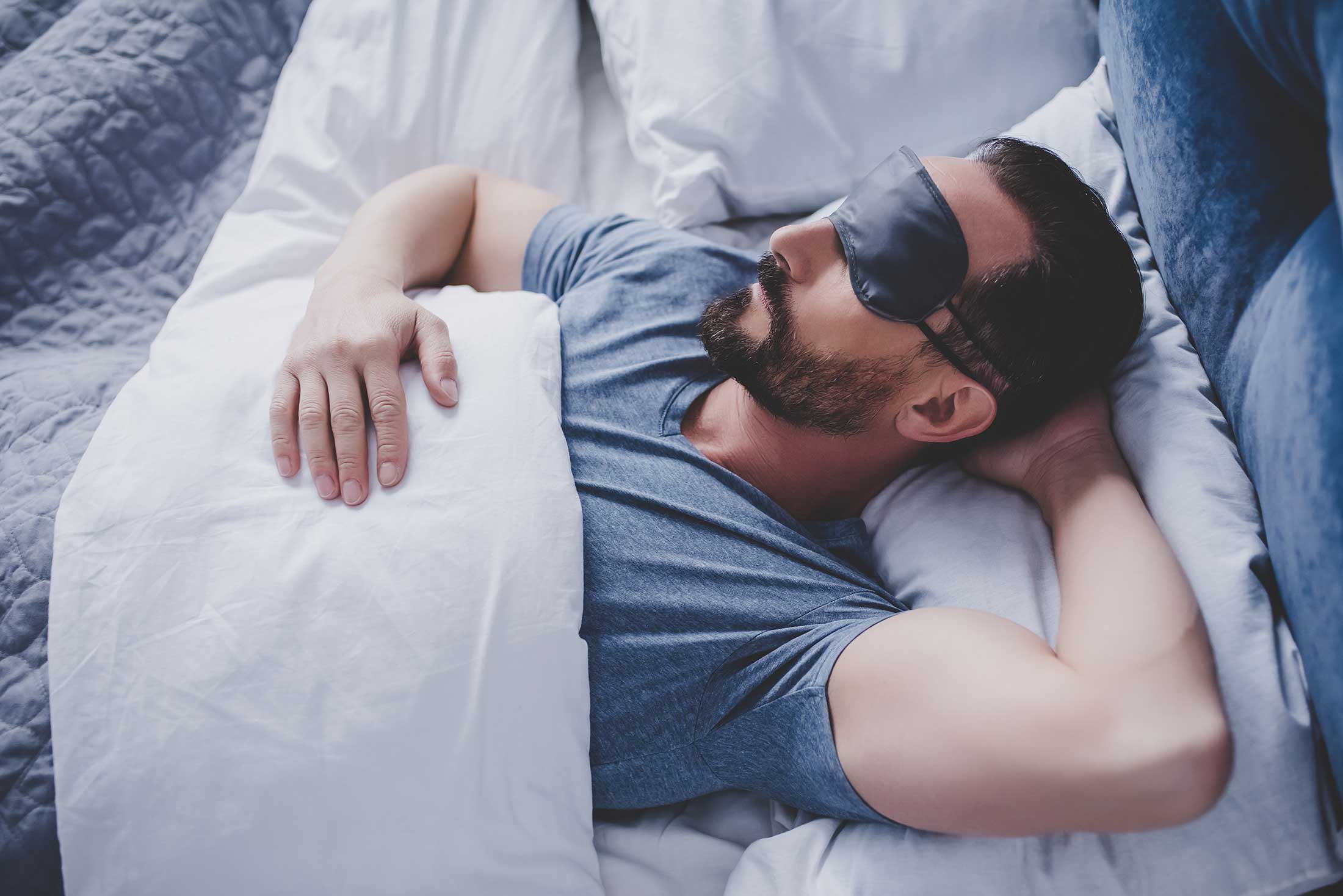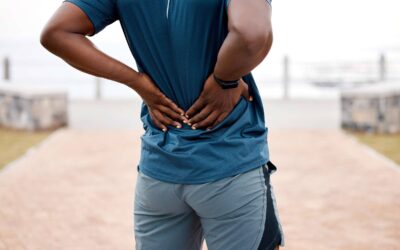Your Guide to Passive Recovery Strategies
TOPIC: Recovery
What is Passive Recovery?
I don’t think that there exists a complete guide for athletes that tackles the underrated topic of “Recovery-Regeneration” strategies. I plan to disclose a majority of the scientific and practical information that I know of on this topic and equip you with everything you need to be successful. Faster recovery means faster strength gains.
You can break recovery down into two categories: passive and active.
Both approaches are indeed vital and complement one another. Recovery is ultimately dictated by fluid flow in the body, which can be expedited by active recovery strategies — your heart, lymphatic systems, and muscles are working to pump out waste and deliver essential nutrients.
But taking full advantage of passive approaches shouldn’t be overlooked, and will do wonders in restoring your body’s cells as fast as possible so you can keep training.

In this blog, we’ll focus on the following passive recovery strategies:
- Soft tissue Massage/Self-Myofascial Release
- Static Stretching
- EMS
- Ice/Cryotherapy
- Contrast Baths
- Cat Naps & Sleep
- Sauna
- Ultrasound
- Epsom Salt Baths
- Nutrition: Carbohydrates, Protein, Fats
- Hydration
- Pre & Post Workout Nutrition
- Deep Diaphragmatic Breathing Techniques

Written By
Travis Hansen
Travis is a Certified Personal Trainer and celebrated author with over 15 years of experience training thousands of members toward their fitness goals.
Website
Passive Recovery Strategies
Massage & Self Myofascial Release (SMFR)
The topic of Massage has been discussed to death, but that’s because it’s important. Massage is used to “promote relaxation of muscles, help loosen up scar tissue, and stretch tight muscles and fasciae. [1]”
Moreover, massage and soft tissue work may improve the elasticity of tissues. Massage is believed to increase local blood flow and metabolic waste removal; however, there were several studies along with the words of world famous coach Christian Thibadeau that refute this claim. The specific mechanism for why both SMFR and massage work deals with the GTO mechanoreceptor located at the musculotendinous junction. When you apply a certain degree of pressure to a specific muscle, the GTO is activated, which in turn creates what is called autogenic inhibition.
Autogenic inhibition is simply a decrease in activity of the opposing muscle spindle located within the muscle belly which stimulates contraction of the muscle. When this occurs, the muscle won’t contract, and relaxation and tissue lengthening ensues.
Eric Cressey and Mike Robertson co-authored an awesome piece awhile back which emphasized SMFR/massage as a means of reducing the activity of the nervous system (tone) and its components. You can attempt to stretch a muscle, but if what’s regulating the muscle (nervous system) doesn’t respond, then it won’t lengthen.
Static Stretching
In my book, I disclosed several studies considering whether or not hamstring stretching had benefits on hamstring health and performance. Of the near half-dozen studies I found, a couple showed it may prevent injury. Several studies showed it can obviously improve the flexibility of tissues and joint range of motion. But does it assist in recovery of neuromuscular structures?
In one study, researchers used a protocol that involved 7 minutes of static stretching following a football game. Relative to cold water immersion (CWI) and active recovery methods the stretching was deemed inferior. [2] A similar study with basketball players identified the same outcome. [3] Two other reviews went on to state that stretching was not an effective recovery modality. [4][5]
However, I don’t think that there are downsides to stretching if you want to do it. Just make sure you practice it a day or so prior to high-intensity efforts — one study showed it could delay performance if done too close to training for too long. Dynamic stretching is better for pre-workout warmups. But for the purposes of increasing flexibility, static stretching is basically “time under tension” for getting into deeper ranges of motion.
Try this guide to static and dynamic stretching to help you on your way:
Pre-Activity or Workout
Dynamic Stretching 1-2 sets of 5-8 reps or 5-10 minutes
Post-Activity or Workout:
Dynamic Stretching 1-2 sets of 5-8 reps or 5-10 minutes
Static Stretching 1-2 sets of 2-3 reps or 10-60 seconds +
Electrical Muscle Stimulation (EMS)
EMS or Electrical Muscle Stimulation is a classic therapeutic protocol that assists in several important physiological processes that positively impact recovery from high-intensity athletic training.
EMS works by transmitting electrical impulses that bypasses the CNS to a target muscle. The unique contraction signal sent from the EMS device is nice, because it doesn’t affect the CNS or contribute to the fatigue of this system. EMS can help with muscular re-education, atrophy reduction, pain management, edema or swelling, and more. A while back I located a solid review of the modality as it pertains to recovery, which shared about a dozen studies, but I can’t find it. (Sorry about that.)
I do vividly recall though, that the primary consensus and benefit of EMS with recovery was increased blood flow. The lymphatic system lacks a central pump, so the contraction generated with EMS is one way to get things moving along in the bloodstream. I would recommend reading this awesome article compliments of Chad Smith over at Juggernaut Training Systems. Chad discusses EMS in its entirety and includes a basic outline on how to manage its use during the training week. [6]
Ice/Cryotherapy
The vasoconstriction effect of cooling tissue makes the superficial cold application an effective modality to reduce pain, swelling and edema following trauma. Therapeutic cold can be used to inhibit spasticity, facilitate muscular contraction for various forms of neurogenic weakness, and for muscle re-education.” [7]
Cold packs and immersion are the most common forms of ice treatment. Bret Contreras shared an article on his site which examined a study conducted on nearly two dozen professional rugby players. The study was intended to see how different recovery options affected a series of functions, such as (i) Creatine Kinase Levels, a.k.a. the marker for muscle damage and soreness, (ii) jump performance, and (iii) individuals own perceived level of muscular soreness.
The specific approaches used on the athletes were cold water immersion (CWI), contrast baths, and light aerobic exercise. All three functions were deemed effective, although both cold water immersion and contrast were superior to light aerobic exercise for improving all three measures. The contrast was crowned king compared to both light aerobic exercise and cold water immersion according to researchers. [8]
Contrast Baths
Contrast baths (alternating submersion in warm and cold water) are also a hot topic for athletic recovery. Every study or article I researched supports contrast therapy for increasing superficial blood flow, which can only help recovery efforts. There was one large systematic review that analyzed all 28 articles on the topic of contrast baths dating back from 1938 to the present, and it also advocated contrast baths as an effective means of increasing blood flow. 9
Looking at how many professional athletes use ice and contrast on a regular basis is an unignorable data set. Perhaps there exists a placebo effect to some extent, but why would they subject themselves to such torturous techniques if they weren’t working somehow physiologically? Most athletes report decreased soreness and better muscle function following contrast therapy.
Sauna Sessions
I first heard of this one from world famous strength and conditioning coach, Joel Jamieson. Joel is a very bright guy and used to be part of the Seattle Seahawks staff. He notes that the sauna can increase activation of the sympathetic nervous system — this is important for individuals who are more aerobic or long-distance dominant. Often this type of athlete can suffer from parasympathetic dominance and all of its associated symptoms, such as decreased heart rate, blood pressure, and respiration rate.
By integrating a sauna into the mix, you can help balance out signals sent from each branch of your collective nervous system. I found a study that showed a mist sauna can help someone recover from local muscle fatigue. [12] I should note that this doesn’t pertain to most athletes, especially in team sports, but I think it may serve great for an in-season athlete dealing with ridiculous workloads and volumes.
Ultrasound
I am not a physical therapist, nor do I understand the full effects associated with ultrasound treatment, but I did work as a technician for a couple years. I got to witness firsthand how this technique can help loosen up scar tissue and increase blood flow. Please note that this modality should only be used in the care of someone qualified/licensed to handle and administer this form of treatment. “If used with care, deep heat, such as ultrasound, can be effective by increasing the extensibility of tight connective tissue, thereby increasing blood flow.” [13]
Epsom Salt Baths
I personally didn’t respond very well to Epsom salt baths. I nearly fainted and passed out when I submerged myself in a bath sprinkled with this stuff, but I later found out my mother and I are allergic to sulfate-based products, so beware of that. Epsom salt baths can be great for neural recovery due to the fact they contain magnesium. Minerals can have a sedative effect and induce pure relaxation that is essential following high-intensity training endeavors like sprinting, agility, jumping, lifting, etc.
Many athletes use epsom salt baths as a method of tissue relaxation and recovery.
10-20 minutes with 200-400 mg of Epsom should do the trick.

Sleep
I found a pretty awesome study that assessed many of the hormonal and metabolic effects associated with sleep performance, and its role in the collective recovery process. First off, sleep deprivation results in increased sympathetic nervous system activity. We want this branch of the nervous system to be active during high-intensity exercise. But if it’s turned on during the night, we aren’t recovering properly, especially in regards to hormone balance.
A big area of concern with a lack of sleep is the steady increase in cortisol concentration that occurs. Normally, as the day progresses, and we reach the evening, cortisol should begin to decline and other anabolic hormones start to increase their levels in the body, and vice versa. However, in a sleep deprived state this is not the case. One subject was six times slower at lowering cortisol near bedtime than someone who had experienced adequate sleep in the days that preceded. [14] This becomes a major problem for muscle and tissue repair since cortisol inhibits the amino acid Leucine from generating protein synthesis, decreases insulin sensitivity, and lowers testosterone levels to name a few. [15]
Both the thyroid and growth hormone axis were also dramatically affected by a loss of sleep. [1] After a week of poor sleep, subjects experienced a decrease in TSH (Thyroid Stimulating Hormone) by up to 30%. As many of you well know, the thyroid is a huge metabolic and performance regulator in the human body. Just open up a basic anatomy and physiology book and you will see what I mean. Aside from helping us to maintain a healthy and lean body composition, the thyroid’s function is synergistic with the nervous system. Meaning that a low thyroid will reduce neural activity and subsequent muscular output that is essential to performance. The thyroid can also help raise growth hormone levels, which also take a hit when we miss out on sleep.
…Including Cat Naps
I think cat naps suck, but I have too many of my athletes and co-workers that participate in them on a daily basis. Perhaps it has to do with circadian rhythms and genetic factors, I’m not sure, but I just feel exhausted by them for some reason. The common claim over the years from coaches and trainers are increased releases of Growth Hormone during the nap period, and I found a study to confirm it. [10] Try it out and see how you feel because it may help as Growth Hormone is clearly involved in strengthening tissue. [11]
Nutrition: Carbs, Fats, & Protein
Carbohydrates serve a major role in the recovery process and are arguably the most important nutrient in being able to recover fully. Without the appropriate intake of carbohydrates we won’t be as successful in re-hydrating after a grueling training session. Dr. Edmund Burke had a pretty stellar book on recovery, which discussed hydration science in full detail. The carbohydrates we consume not only help to replenish glycogen stores that help regulate performance and recovery (i.e. cell signaling, etc.), but they also increase the absorption of water through the intestinal wall with the help of sodium. [16]
Moreover, carbohydrates are hydrophilic or water-loving in nature. So for each gram of carbohydrate we ingest, it brings approximately three grams of water along with it. Not to mention that carbohydrates contain several of the key electrolytes that are excreted during training and need to be replenished in the hours afterward.
Carbohydrates also increase the release of insulin which is a key player in protein synthesis. Insulin prevents protein degradation or breakdown from occurring in our muscle cells. I’ve also seen some stuff that shows it helps regulate the MTOR pathway, which is one of the primary muscle building pathways in the human body, according to many credible sources.
I don’t think it’s any secret at this point that protein is essential to the recovery process. Next to water it is the most abundant source in the body, and along with carbohydrates, protein is a frontrunner in terms of recovery potential. It helps build just about everything in the human body.
I like the “gram per lb. of bodyweight” rule of thumb that many still advocate, or 30% of our total calorie intake per day. Every credible authority arrives at this recommendation and has dating back decades now. In his book “The Paleo Diet,” Dr. Loren Cordain discusses the “nitrogen governor” theory in our liver that regulates the consumption of protein. The body has clear limits, determined by the liver’s inability to handle excess dietary nitrogen (released when the body breaks down protein). For most people, this limit is about 35 percent of your normal daily caloric intake. If you exceed this limit for a prolonged stretch of time, your body will protest with nausea, diarrhea, abrupt weight loss, and other symptoms of protein toxicity. [17] But, protein is primarily responsible for causing us to feel full in the short term. It also has a lower calorie content per gram, which is why it’s harder to overeat protein.
I’ve never seen a dietary reference guide (RDA, etc.) advise people to eat more than up to 40% of their calories from protein. My point with all of this is that protein seems to get too much credit above the other macronutrients when it comes to recovery and other topics. You need it, make sure to get it and prioritize it, but be sure not to overlook other essential sources of nutrition and their roles too so you complete your macronutrient synergy.
If you’re a sprinter or a team sports athlete, you will not be required to consume much fat in general as higher intakes affect certain anabolic responses negatively. The alactic and lactic energy systems which we rely on primarily in sport, are fueled by carbohydrate and protein derived energy sources (glucose and creatine phosphate). That being said, fats play a critical role in recovery in the hours after training. Fats also help with neurological function by forming what is known as myelin sheaths around specific neural structures. Fats help build hormones, raise hormone levels, and supply us with the calories to make us more anabolic.
Pre-Workout Nutrition
First off, I think it’s important to note that the body has several energy reserves that it can call upon when the time is necessary to support activity. Blood glucose, muscle and liver glycogen stores, amino acid pools, and fat stores guarantee we do not run out of fuel right away. So is pre-workout necessary? I think it would depend on meal frequency and quantity, along with activity duration and type.
The Cori Cycle in the liver converts amino acids to glucose through a specific process. If we don’t get adequate carbs and decide to train at high intensities, then muscle loss becomes an issue. We need to make sure to get plenty of carbs for this reason alone. There is also some evidence showing increased protein synthesis post-workout with a pre-workout meal consisting of both carbohydrates and protein. [19]
None of what I read was conclusive, but the researchers did make mention that pre-workout carbohydrates might potentially delay fatigue. I also think a nervous system stimulant such as coffee works great for increased training production through higher adrenaline release and energy production. Anecdotally, we have some solid benefit from the addition of a stimulant (in moderation).
Post-Workout Nutrition
The biggest reason for a post-workout protein shake has to do with utilizing increased insulin sensitivity. The quicker we get a post-workout drink or what have you, the greater the uptake of nutrients into our cells and the faster we can recover.
However, there was a study that showed the window of rapid absorption was not dependent on insulin. Again, getting food in quicker could only help. Many people aren’t hungry after intense training, so it’s not always that simple. Glycogen replenishment eventually slows down after the acute phase of recovery is officially over. But we still generally have 40+ hours to get enough food and the right kind of food into our body to support recovery.
I’ve had dozens of athletes bulk up heavily and preserve muscle with very little emphasis on post-workout nutrition, and I’m sure many others can attest to this. We aren’t going to shrink that fast, so I don’t think people should worry all that much about timing. And according to one author, it took three hours before decreased protein synthesis and muscle loss became an issue. [6] That’s quite a big window, and other credible evidence suggests this “anabolic window” could be as long as five hours before you witness decreases in recovery and muscle mass restoration and growth.
Hydration
I’ve read figures that estimate our body is comprised of anywhere from 50-60% water. Moreover, a reduction in the water mass of just 2-3% could impair performance. [18] Lyle McDonald also referenced some solid research and evidence in one of his books that discussed the role water and hydration plays in tissue growth. Bottom line is that being able to create and maintain hydration is critical to the recovery process.
Supplementation
If you want the holy-grail of supplement information, browse through Sol Orwell’s site, read his articles, and check out his complete supplement guide. His guide is backed by a wealth of the latest research on effective supplementation.
There are a handful of tested supplements with enough evidence to support their positive effects. Check out this article for a solid foundational understanding of the most studied and relevant supplements for strength: Supplement Primer for Strength and Conditioning Athletes
Unfortunately, none of the research I have seen on more advanced supplements like BCAA’s, Arginine, Glutamine, or EAA’s was that promising or essential if your nutrition is on point. Your best bet is to make sure you are eating healthy and obtaining all of the right foods in the right quantities to meet your objectives and let the body do the rest like it’s hardwired to do naturally.
Deep Diaphragmatic Breathing
Deep diaphragmatic breathing modulates your autonomic nervous system, specifically activating your parasympathetic branch. Also known as your “rest and digest system.” Parasympathetic activity is anabolic, anti-inflammatory, and orchestrates mechanical, metabolic and nervous system restoration and development. Without adequate parasympathetic function, performance, resilience and health are all severely compromised. (Boyle, 20) In other words, deep breathing can do a number of things in your body that will ultimately help you perform better, stay healthier, and recover faster after each grueling workout.
To Sum It Up…
Everyone needs to recover, and if you’re an athlete, you’ll need to prioritize your recovery to feel ready to attack the next workout. Don’t short-change yourself by skipping out on recovery efforts. Try them all, but ultimately do the ones that stick and work for you regularly. Consistent recovery leads to consistent gains.
References
1 – Kendall, F. Muscles Testing and Function with Posture and Pain. Philadelphia: Lippincott Williams & Wilkins, 2005. Print.
2 – Kinugasa, T., and A.E. Kilding (2009). A comparison of post-match recovery strategies in youth soccer players. Journal of Strength and Conditioning Research. 23: 1402-1407.
3 – Montgomery, P.G. (2008). The effect of recovery strategies on physical performance and cumulative fatigue in competitive basketball. Journal of Sports Science. 26: 1135-1145.
4 – Barnett, A. (2006). Using recovery modalities between training sessions in elite athletes: does it help? Sports Medicine. 36: 781-796.
5 – Vaile, J. (2010). Recovery Review: Science vs. Practice. J. Aust. Strength and Conditioning. 2: 5-11.
6 — http://www.jtsstrength.com/articles/2012/10/15/ems-for-maximum-strength-and-performance/
#7- #1- Kendall, F. Muscles Testing and Function with Posture and Pain. Philadelphia: Lippincott
Williams & Wilkins, 2005. Print.
8 — Webb, NP. The relative efficacy of three recovery modalities after professional rugby league matches. Journal of Strength and Conditioning Research, 27: 2449-2455, 2013.
9 – Breger Stanton, DE. A systematic review on the effectiveness of contrast baths. Journal of Hand Therapy, 22: 57-69, 2009.
10-http://www.ncbi.nlm.nih.gov/pubmed/4377652
11-http://onlinelibrary.wiley.com/doi/10.1113/jphysiol.2009.179325/full
12-Lee, S. Physiological functions of the effects of the different bathing method on recovery from local muscle fatigue. J Physiol Anthropol, 2012.
13 #1-http://www.medscape.org/viewarticle/502825
14-http://www.bodyrecomposition.com/muscle-gain/calorie-partitioning-part-2.html/
15-Burke, E. Optimal Muscle Recovery. New York: Avery Publishing Group, 1999. Print.
16-Cordain, L. The Paleo Diet. New Jersey: John Wiley & Sons, 2002. Print.
17-Tipton, KD. Timing of amino acid-carbohydrate ingestion alters anabolic response of muscle to resistance exercise. AM J Physiol Endocrinol Metab, 281: 197-206, 2001.
18-Fink, H. Practical Applications in Sports Nutrition, 2011. Print.
Find Your Perfect Training Plan
Sometimes all you need to reach your destination on your fitness journey is an expert guide. Look no further, we've got you covered. Browse from thousands of programs for any goal and every type of athlete.
Try any programming subscription FREE for 7 days!
Related Articles
You May Also Like...
3 Ways to Improve Mobility Without Stretching
Are you still trying the endless foam rolling and stretching exercises to get that deep squat position? We know how important mobility is for great, or even GOOD performance. All professional athletes have some comfortability in end ranges of motion. So, what else do...
Active Recovery Strategies for Strength Athletes
Active recovery isn’t just about taking it easy—it’s a smart way to keep your body moving, boost circulation, and enhance performance without adding fatigue. While passive recovery has its place, low-intensity movement between sessions helps reduce stiffness and...
The Ultimate Low Back Training Guide: Tips for a Stronger Spine
Low back pain sidelines countless athletes and gym-goers. But here’s the truth: your lower back doesn’t need endless isolation work to stay strong. The real secret? A smart mix of direct and indirect training strategies. This guide breaks it all down, giving you...
3 Ways to Improve Mobility Without Stretching
Are you still trying the endless foam rolling and stretching exercises to get that deep squat position? We know how important mobility is for great, or even GOOD performance. All professional athletes have some comfortability in end ranges of motion. So, what else do...
Active Recovery Strategies for Strength Athletes
Active recovery isn’t just about taking it easy—it’s a smart way to keep your body moving, boost circulation, and enhance performance without adding fatigue. While passive recovery has its place, low-intensity movement between sessions helps reduce stiffness and...

Want more training content?
Subscribe
For Coaches
For Athletes
About
Support
Training Lab
Access the latest articles, reviews, and case studies from the top strength and conditioning minds in the TH Training Lab!
Made with love, sweat, protein isolate and hard work in Denver, CO
© 2024 TrainHeroic, Inc. All rights reserved.





